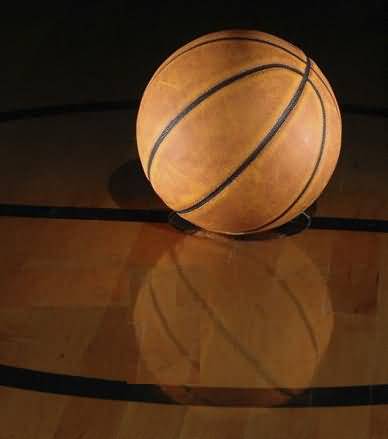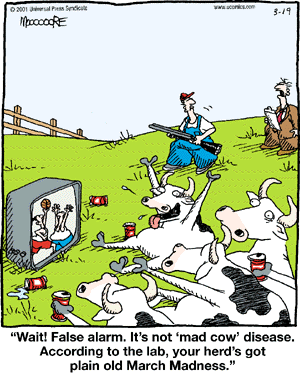| Go to Archive Index |
March 15, 2013 Newsletter #8
|
Dear Coaches, Players, Friends,
Today's Quote
"How should we Democrats select the next presidential nominee? Smoke-filled rooms? Brokered convention? National primary? Personally, I prefer jump shots from the top of the key." - Senator Bill Bradley (former All-American and NY Knick), prior to the 1988 Presidential campaign
Today's theme is "Post-Game Talks".
by retired Coach Ken Sartini (aka "Coach Sar"), Arlington Hts, IL.
General approach
The longer I coached the more I learned about what to say and what NOT to say after games. I think that early in my career I was too long winded, win or lose, they really aren't going to listen for more than a few minutes.... IF they won, they were happy and wanted to celebrate... if they lost... they were pretty much down and tuned me out.
Win or Lose
After coaching high school ball for 27 years, 16 of that as the Varsity coach I changed a lot about what I said after games. Face it, after a few games they could pretty much get up and say what I was going to say. So, I did a few different things from time to time..... I would say a few things to them, or I would let my assistant talk.... and then I decided on picking out one of the players.... ( didn't have to be a starter ) and let him give the post game talk. Amazing about how spot on they were most of the time.
Then I decided on doing this at away games.... a very short talk.. 1-2 minutes and said that we would discuss the game (win or lose) back at school. That way, we got back home faster and cooler heads would always prevail since everyone had a chance to think about the game.
Played Well
If we played well.... I would tell them that and give a few examples... "we took 5 charges tonight" - " we did a great job of controlling the tempo " etc. Again, they want to celebrate so I kept it short.
Played Poorly
If we played poorly ..... keeping this short ..... I would tell them that we didn't play very well tonight... remember, the other team had something to do with that. There are a few things we need to correct and its early in the season. (later in the season I would leave the early part out) The only time that I would let them know that I was unhappy about the way they played was IF I felt they didn't play hard.... I only remember one game that way.
I also learned this after I got a new assistant one year... we would go out after every game, we would order a "pop" and a sandwich. We would write down all the areas that we needed to work on, things where we made mistakes in that game. We discussed the game until the food came and then we relaxed.
I took that information that we wrote down and put it into the next couple of days practice plans so we could correct it. IF there was a certain situation that we didn't handle well... we would run those situations at the end of the next practice, that was a great teaching tool and a good learning situation for the players. They knew why we were running those, they would just smile. I think they appreciated the fact that I didn't yell at them for messing it up and taught them how we wanted to deal with it in the future. I hated making the same mistakes twice.
Won a close game
There is nothing better than this feeling, for players and coaches. There is really nothing that you need to say to them because they are so happy. I remember one game where they were in the locker room really celebrating after winning a big game... My assistant and I sat outside for about 5-6 minutes and let them enjoy it.
Lost a heartbreaker
I can remember a few games like that... there is really nothing that you can say that will make it easier for them.... other "than we played a great game tonight and just ran out of time... they got the last shot and not us." Then we would just sit there for a few minutes and I would let them contemplate how things went, just so they could get control of their emotions. (I was in a lot of very sad, teary eyed locker rooms)
Then I would have them stand up, I would ask them to put out both hands and wiggle their fingers... and I would tell them, "see, they all work." I would get a weak smile but at least it broke the tension.
I think that every coach has his own style and you need to be true to yourself ... if you don't, the kids will know and you could lose your credibility.

|
Coach's Clipboard Premium Membership - join today! Really one of the best bargains available today for coaches and players. Immediate online access, comprehensive playbook with offenses, defenses, plays, drills, coaching and player tips, animated diagrams, video clips, mobile-ready, pdfs for print-outs, and more!
|
New Articles/Content:
New or revised website articles:
Added the "Michigan-Style 2-Guard Offense" animation to the Premium Members section and Deluxe CD.
Added the "Hubie Brown's Hawk Offense" animation to the Premium Members section and Deluxe CD.
Added the "Pete Carril Princeton Offense" animation to the Premium Members section and Deluxe CD.
Added the "Horns Offense" animation to the Premium Members section and Deluxe CD.
See the complete "What's New" list.
Out of the Past...
Some of basketball's very early rules:
We discussed five original rules in the last newsletter. Here are more of the early rules.
- Game times
Two 15-minute halves, running watch. Halftime was 5 minutes. - The winner is:
The team with the most goals... 1 point per goal. If there was a tie, the captains on each team could agree to play until another goal was scored (so it was sudden death or victory). - Positions
Dr. Naismith suggested the 9 players be arranged on the floor as: a goalkeeper, 2 guards, 3 centers, 2 wings and a "home man" (basket hanger)... no 3-second rule in those days. - On roughness:
Dr. Naismith did not want it to be rough like rugby... "The time to stop roughness is before it begins". He found that after a team committed two consecutive fouls, they would really be careful not to foul again, since the third foul would give the other team a goal... and not many goals were scored in those days. The jump shot and the fast break had not yet been invented! Dribbling and ball handling was not as good, with a lopsided ball. - The center jump
After each basket was made, a center-jump was held at mid-court... the other team didn't automatically get possession. Dr. Naismith was very opposed to the rule change later that eliminated the center jump. He felt that eliminating the center jump penalized the team that just scored. The other team could now take the ball and stall with it for a long time, if they had the lead. The 10-second rule eventually came in to force teams to advance the ball up the court and speed up the game. Many teams held the ball for very long periods of time, and the scores were very low.
It's March Madness time!

|
Practice Planner Live Use this online program and get access to the tools professionals use. Plan practices easily, quickly and more effectively. Have all your drills and thoughts in one place. Get access to your practice stats and see if your team play reflects what you are working on... See statistics of your practice. Are you focusing too much time on one aspect of the game? Now you never have to guess! Baseball, Basketball, Football, Soccer, and More! Get the Practice Planning Edge Today! More info |
  |
Join us on Facebook and Twitter! Become a fan & friend! Coach's Clipboard on Facebook Coach Gels on Facebook Coach Gels on Twitter |
Till next time...
Best wishes,
Dr. Jim Gels, aka "Coach Gels"
The Coach's Clipboard
https://www.coachesclipboard.net
https://www.coachesclipboard.net/CoachesClipboardPremiumContent/index.html - Premium Members section
All Coach's Clipboard materials are under US copyright, 2013, James A. Gels
Click here to unsubscribe to this newsletter (please include your username in the email).
Email me your comments or suggestions.
